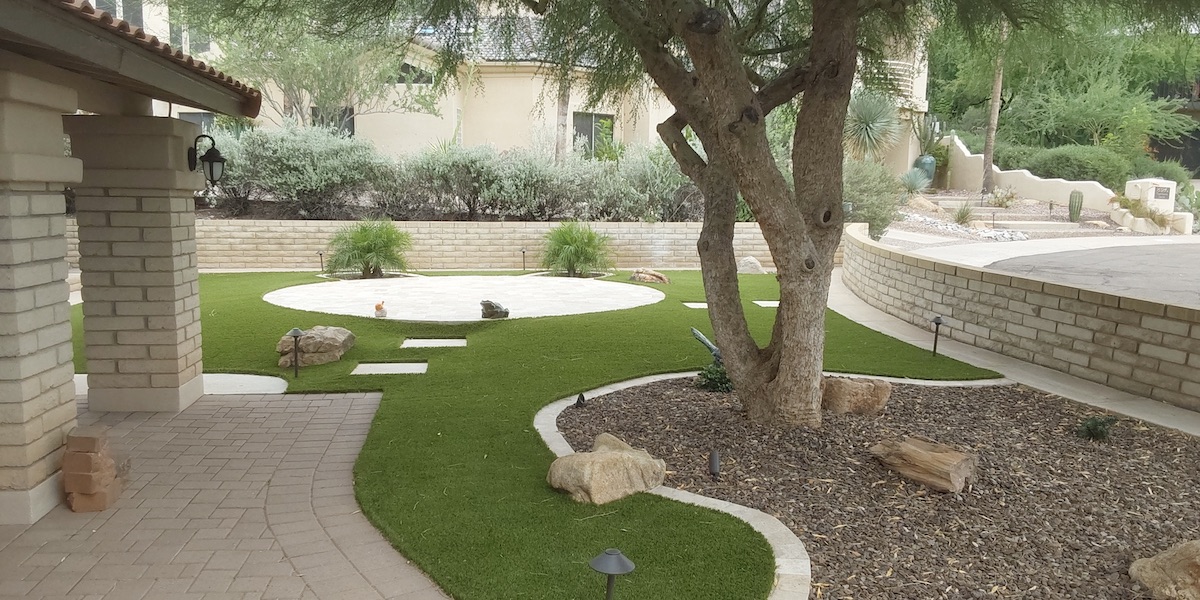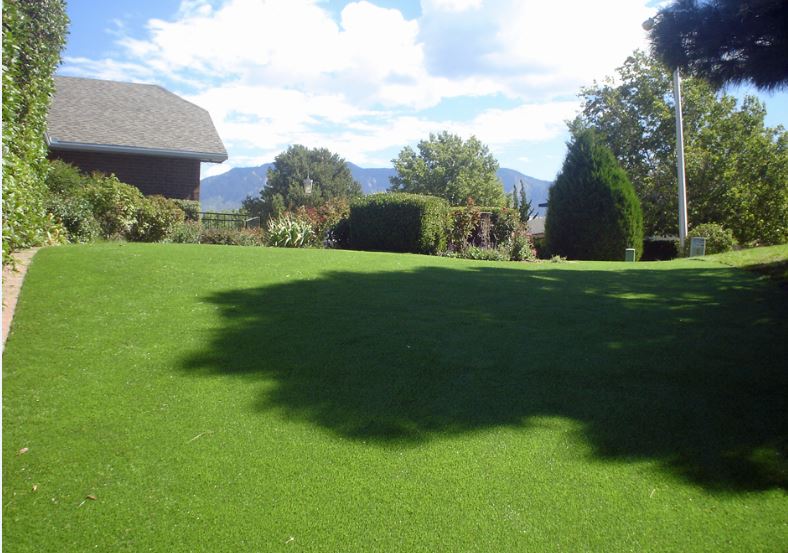Discover the Best Artificial Grass for Your Canoga Park Property
Discover the Best Artificial Grass for Your Canoga Park Property
Blog Article
Leading Factors to Consider Artificial Yard for a Rich and Low-Maintenance Backyard
As property owners significantly look for lasting solutions for outside rooms, fabricated turf presents an attractive option to typical lawns. The benefits extend past simple visual appeals and sustainability; checking out the complex effects of synthetic grass reveals a detailed method to lawn administration that merits much deeper consideration.
Year-Round Greenery
Among the most significant benefits of man-made grass is its capability to offer year-round plant, despite climate conditions. Property owners frequently encounter obstacles in keeping a lively lawn as a result of seasonal changes, dry spells, or heavy rains. Man-made lawn gets rid of these worries, making sure a regularly lavish look throughout the year.
This artificial choice is crafted to hold up against varied weather circumstances, from sweltering summer warmth to freezing wintertime temperatures. Unlike natural grass, which may brownish or end up being patchy during severe conditions, synthetic grass preserves its lively shade and structure, improving the visual charm of any landscape.
Additionally, man-made grass is resistant to parasites and illness that commonly affect natural grass. This resilience adds to its long-lasting elegance, as there is no demand for chemical therapies or fertilizers that can be dangerous to the environment. House owners can appreciate the aesthetic benefits of a well-maintained grass without the intermittent challenges posed by all-natural turf care.
Lowered Upkeep Efforts
Man-made grass considerably reduces upkeep initiatives, permitting house owners to enjoy a pristine yard without the time-consuming tasks connected with all-natural yard treatment. One of one of the most notable benefits of artificial grass is the removal of regular mowing. Without need for a lawnmower, homeowners conserve both time and the expense of maintenance connected with this tools.

Cleaning artificial grass is uncomplicated; a basic rinse with a hose pipe or the periodic cleaning to get rid of debris is normally sufficient - artificial grass canoga park. This convenience of care permits house owners to spend more time appreciating their outside areas instead of struggling over them. In recap, the decreased upkeep efforts connected with artificial lawn make it an enticing option for those seeking a lovely, problem-free yard
Water Conservation Advantages
The significant reduction in upkeep efforts connected with man-made grass encompasses water conservation, making it an eco friendly choice for home owners. Conventional yards require significant amounts of water to stay vivid and lavish, frequently causing too much water usage, particularly in deserts. On the other hand, fabricated turf removes the requirement for regular watering, dramatically reducing the overall water consumption in your backyard.
By selecting synthetic turf, property owners can save thousands of gallons of water yearly. This change not just advantages private homes however additionally adds to more comprehensive ecological initiatives targeted at minimizing water waste. In locations experiencing water deficiency, the fostering of synthetic turf can play a significant function in minimizing the effects of drought and guaranteeing that important water resources are utilized extra effectively.
In addition, the installment of fabricated turf can aid reduced local water need, profiting the community overall. With expanding understanding of ecological concerns, picking man-made grass functions that site as an aggressive action towards sustainable landscaping, helping to protect natural water resources while keeping an aesthetically pleasing outside space (artificial grass installation). In summary, artificial turf have a peek here provides a compelling remedy for water preservation, lining up ecological duty with modern landscaping demands

Insect and Allergy Reduction
A significant benefit of setting up artificial lawn is its capability to minimize bugs and irritants in outdoor areas. Typical turf lawns typically function as reproducing grounds for insects such as insects, ticks, and ants, which can create pain and health threats for animals and households. In contrast, artificial yard gets rid of the organic material that attracts these parasites, consequently considerably decreasing their populaces in your yard.
In addition, natural yard can harbor mold, pollen, and various other irritants, which can set off allergies and respiratory problems for delicate individuals. Artificial lawn provides a cleaner setting, decreasing the potential for allergenic responses. Unlike all-natural yard, synthetic grass does not produce plant pollen, making it a superb option for allergic reaction patients seeking to appreciate their outdoor rooms without the threat of flare-ups.
Furthermore, the absence of soil in fabricated grass means there is less dirt and dirt, further lessening airborne allergens. This low-maintenance alternative not just boosts the aesthetic charm of your yard yet also advertises a healthier exterior atmosphere, allowing households to enjoy their grass without the consistent worry of allergens and insects. Therefore, fabricated grass is a calculated option for those prioritizing comfort and wellness in their exterior living spaces.
Long-Term Price Savings
Investing in artificial turf can lead to substantial long-term expense savings for home owners. Fabricated yard removes the demand for regular yard maintenance expenditures, such as mowing, fertilizing, and watering.
Additionally, the long life of synthetic lawn further enhances its cost-effectiveness. Many top notch man-made grass items can last 15 to 25 years with marginal maintenance, lowering the requirement for substitute or extensive fixings. On the other hand, natural lawn may call for frequent reseeding and normal treatment, which can rapidly add up in expenses.
Energy savings are one more important variable. Property owners can expect to see lower water costs, as artificial turf does not require irrigation. In addition, the reduction in yard care solutions can free up useful time and sources, allowing homeowners to designate their budgets in other places.
Conclusion
In summary, synthetic yard offers many advantages for home owners seeking a vivid and low-maintenance landscape. Its additional reading ability to offer year-round greenery, combined with reduced upkeep initiatives and substantial water conservation, makes it an appealing choice. Furthermore, the reduction of bugs and irritants adds to a much healthier outside setting. Inevitably, the long-lasting price financial savings connected with synthetic lawn solidify its condition as a lasting and functional solution for improving outdoor areas.
Man-made turf substantially reduces maintenance efforts, permitting house owners to enjoy an immaculate lawn without the lengthy jobs associated with all-natural yard care.The substantial decrease in maintenance efforts associated with artificial lawn prolongs to water conservation, making it an ecologically friendly alternative for house owners. In comparison, fabricated lawn gets rid of the requirement for normal watering, significantly minimizing the overall water intake in your lawn.
In areas experiencing water scarcity, the fostering of synthetic yard can play a considerable duty in reducing the effects of dry spell and making certain that useful water resources are made use of much more successfully.
With expanding recognition of ecological problems, selecting synthetic yard offers as an aggressive action in the direction of sustainable landscape design, assisting to protect natural water resources while maintaining a cosmetically pleasing outdoor area.
Report this page